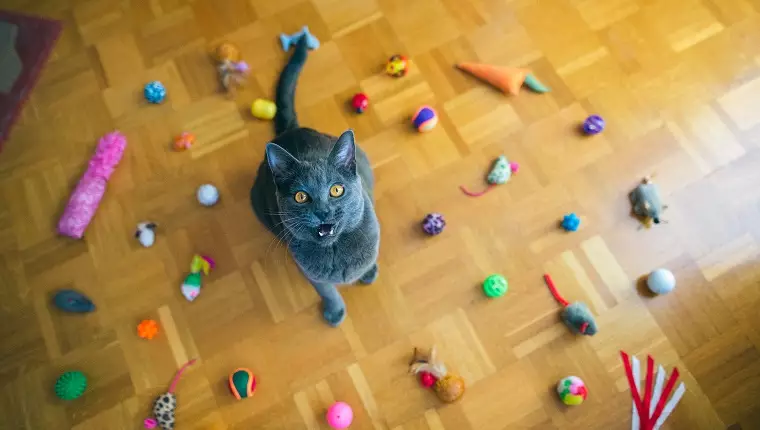February marks Responsible Pet Owners Month, a time to reflect upon our responsibilities as caretakers of our beloved pets. Among issues that need our attention, feline obesity stands out as a particularly pressing concern. According to the Association for Pet Obesity Prevention, an astounding 58 percent of cats in the United States are classified as overweight. This growing trend poses significant health risks, including diabetes, arthritis, and liver disease, potentially shortening the lives of our furry companions. As responsible pet owners, it’s essential to recognize the signs of obesity in our cats and take proactive steps to promote a healthier lifestyle.
If you’ve noticed your cat gaining extra pounds, it’s vital to approach weight loss holistically. A combination of dietary adjustments and increased exercise can make all the difference. However, consulting with a veterinarian before starting any new regimen is paramount. Veterinarians can provide tailored advice based on your cat’s age, breed, and health status, ensuring that any changes won’t risk injury or further complications.
While many may assume that simply reducing food intake is sufficient, it’s equally important to stimulate your cat’s physical activity. Cats are known for their playful nature, yet they can easily succumb to lethargy, especially if they spend considerable time indoors. Finding engaging ways to infuse activity into your cat’s routine can not only aid in weight loss but also enrich their everyday life.
Cats are natural hunters, so their toys and playtime should reflect their predatory instincts. Provide interactive toys that require chasing and ambushing, such as laser pointers, feather wands, and electronic mice. However, a word of caution: it’s important to avoid shining lasers directly in your cat’s eyes.
Incorporating play sessions of short duration—just two to five minutes—multiple times a day can yield impressive results. Consider harnessing their nocturnal tendencies by scheduling more engaging playtime during the evening hours when they’re likely to be most active.
In addition to toys, creating physical structures that promote climbing and exploring can immensely benefit your cat. Cat trees, shelves, and window perches encourage vertical exploration and exercise, tapping into their innate climbing abilities.
Beyond regular play, food can also be an effective motivator for getting your cat moving. Rather than simply placing their meals in one spot, consider spreading small portions of their food around the house. By putting food on higher surfaces or in more challenging locations, you can entice your cat to engage in a playful treasure hunt.
Additionally, puzzle feeder toys can transform mealtime into an activity. These devices require your cat to maneuver their food around, making the eating experience both stimulating and work-filled, thereby promoting physical activity while they eat.
Monitoring your cat’s health and activity level is crucial throughout this journey. A healthy body condition for a cat generally includes a well-defined waist and smooth, but not protruding, ribs. If ever in doubt, consulting your veterinarian can provide an additional layer of accountability as you work to achieve your cat’s ideal weight together.
As cats lose weight, their energy levels and overall vitality often improve, manifesting in more playful behavior and a higher level of engagement with their surroundings. Keeping track of these behavioral changes serves as a motivational tool for both you and your feline friend.
Responsible Pet Owners Month serves as a crucial reminder for all pet parents to take a proactive approach to their cat’s health. By acknowledging the risks associated with feline obesity and taking meaningful steps to ensure their well-being, we can enrich their lives. Abundant playtime, creative feeding methods, and regular consultations with your veterinarian are all vital components of a responsible pet ownership approach.
As you reflect on your personal journey with your cat during this month, consider what additional strategies can be put into place to foster a healthier lifestyle. Together, let’s commit to nurturing our pets’ health for a longer, happier life—ultimately making responsible pet ownership a continuous goal throughout the year.


Leave a Reply